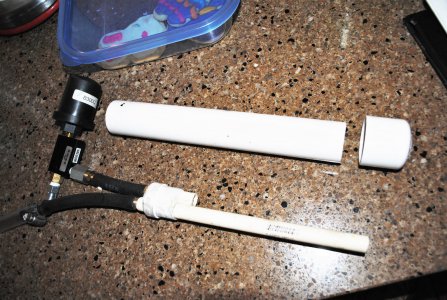- Joined
- Apr 8, 2013
- Messages
- 2,021
Because of the ethanol in the fuel every fall when I winterize my boat I take the fuel system (manifold, injectors, heat exchanger, hi-pressure fuel pump) off my boat engines for draining and cleaning. In the spring I reassemble the engines and also replace the spin on fuel filters in the boat. That's all relatively painless but the part I really hate is getting fresh fuel from the tank thru the filters and all the way to the fuel rails so the motors can start. In the past I opened the fuel line at the tank and hooked up an electric fuel pump to push the gas thru the system all the way to the injectors. This entails kneeling in the bilge while covered with gas trying to prime that pump. Being as I recently had two knee replacements I figgured I had better come up with a better arrangement. I picked up a vacuum generator that works off an air compressor and made a liquid separator canister in order to suck the gas out of the tank right to the engines while keeping the liquid gas of the vacuum generator. I included a piece of clear hose so I could see when the gas reached the canister. I think this would also be a good brake bleeder. Haven't used it yet but the suction is really strong.




